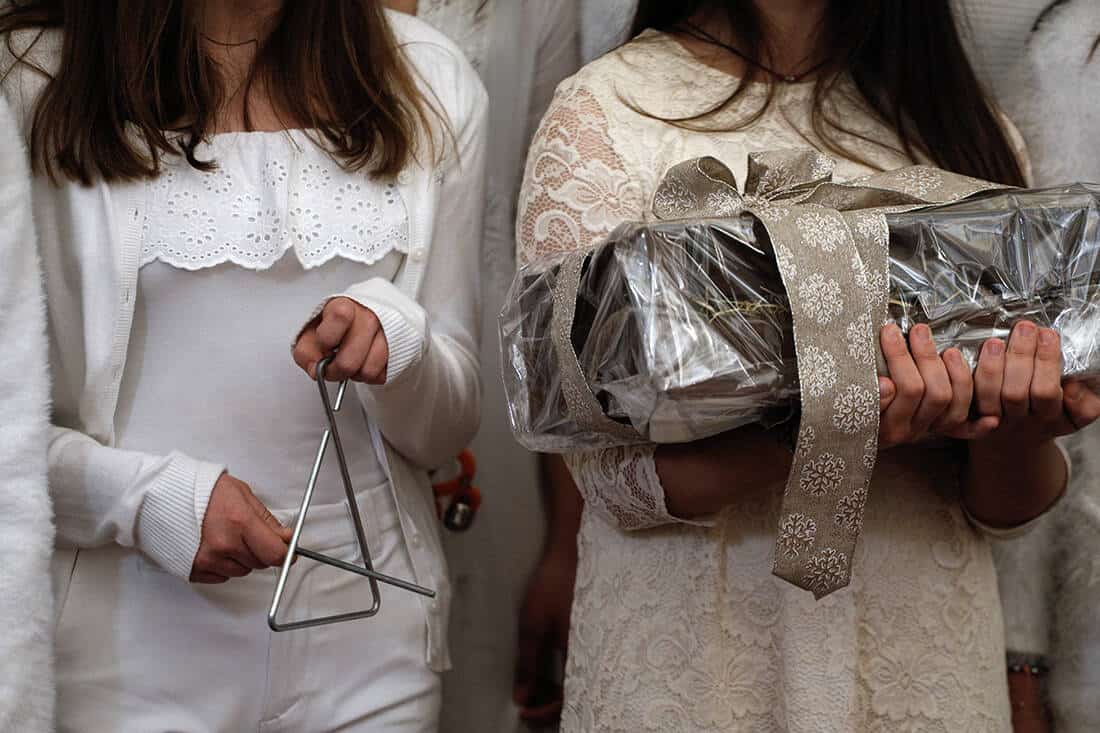Shall we say it? No, they will not tell us on New Year's Eve as they did not tell us at Christmas. The coronavirus may have banned carols this year but their lyrics resonate in the minds and hearts of young and old.
So let 's say it to each other or better let' s explain it! «New Year and New Year, my fine rosemary»Stop! What will "my tall rosemary" say? Who is she; We probably need clarification because even though we spend years, most of us do not know what they really mean or even what they "hide".
So making an analysis of the lyrics we will focus on the story or better on the folk myth that is well hidden in the most famous New Year's song for many years.

But let's start from the beginning. Why are they sung? From whom and when?
The specific songs are sung in the neighborhoods to "transmit" the festive spirit but also to receive a tip from those who chant them either in money (today) or in products (past).
The carols are sung mainly by children but also by adults, either individually or in groups.
Holding the traditional iron triangle and other musical instruments such as accordion, accordion, guitar, knock on the doors of houses on Christmas Eve, New Year and the Lights and ask: "Shall we say it?".
New Year's carols (as well as Christmas carols) announce the coming holiday, while according to analysts who have done relevant research, they bear their name from the January Calendars of the Roman era. From the 2nd BC. century it is noted that the New Year began to be celebrated in January, while until then it was celebrated in March.
Historians claim that they may have originated from the ancient Greek custom of Ierisioni. Ierisioni was a wild olive branch, on which the ancients hung white and red ribbons made of sheep wool and tied to them fruits from the autumn harvest, to thank for the fertility of the ending year and to have it Next.

The carols had been rejected by her Εκκλησία and had been characterized as a pagan custom.
Over the years, however, they were accepted and fully assimilated by Christianity.
In the early Byzantine years, however, the Church tried to limit and displace all major festivals and thus greatly altered the original character of the verses, giving them a Christian overtone, which they retain even today.

New Year's carols, however, are said to "hide" according to the legend that a love story "follows" them.
According to him, the "lad" addresses "rosemary" and expresses his complaint.
The "rosemary" symbolizes a lady of aristocratic origin while the lad belongs to the lower classes.
In the Middle Ages, people of noble descent were not allowed to speak to aristocrats. The only days they could do that were at the festivities, where they were sung various songs.
Thus, in the lyrics of the song, the young man likens "rosemary" to the dome of a church as it is very tall due to the large conical hats and wonders why it does not accept him, that is, why it does not give him importance.
Expressing his complaint, he explains that she is his mistress while at the same time he tells her that it is as sweet as if it was made of sugar.

The carols are one of the few customs which are preserved throughout Greece in contrast to others that over the years are threatened with extinction.
Due to the variations that have to do with the character of each area are divided into traditional, urban and local. In different areas the lyrics change as well as their rhythm while those who sing them are accompanied by the musical instruments of each place.
Also changes in the lyrics are observed over the years. For example, in an old version, the verses said: "He holds an image and paper, with Christ the Redeemer" while now in the specific point it is mentioned: "Hold an image and paper, a kneading candy".
New Year and New Year,
my tall rosemary
and start our good time,
church with the holy throne.
Principle where Christ came out
holy and spiritual,
on earth, on earth to walk
and make us kind.
Santa Claus is coming,
and he conquers us all
from Caesarea,
you are a noble lady.
Picture and paper holders,
fermented confectionery
paper and squid
see also with the lad.
The squid wrote,
he told his fate
and the paper speaks,
my dear, my dear dear Vassilis.
